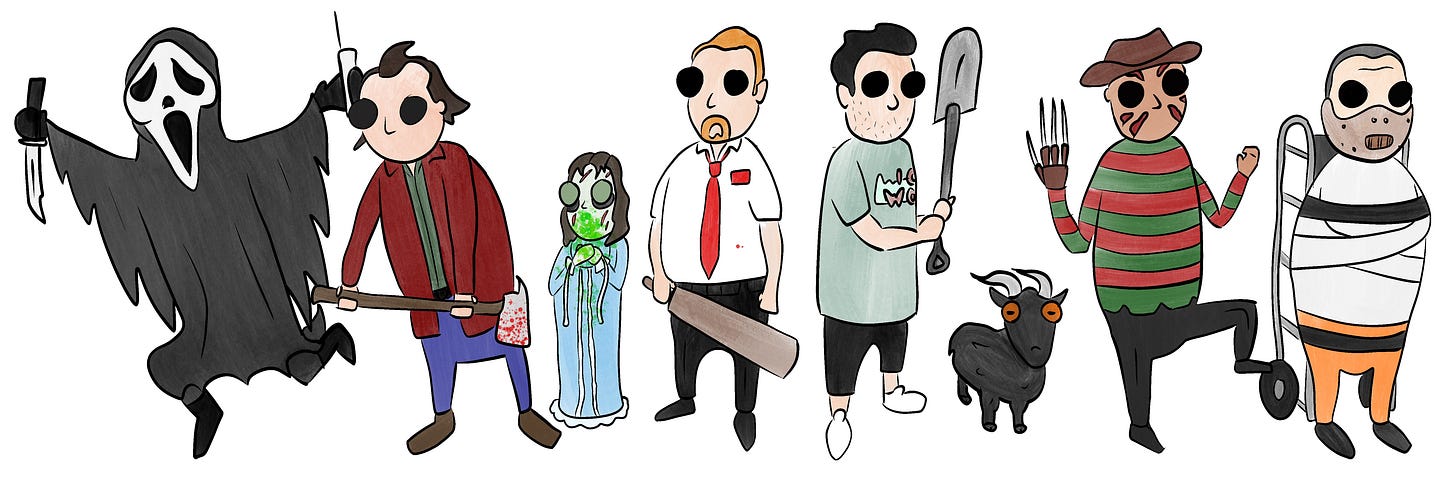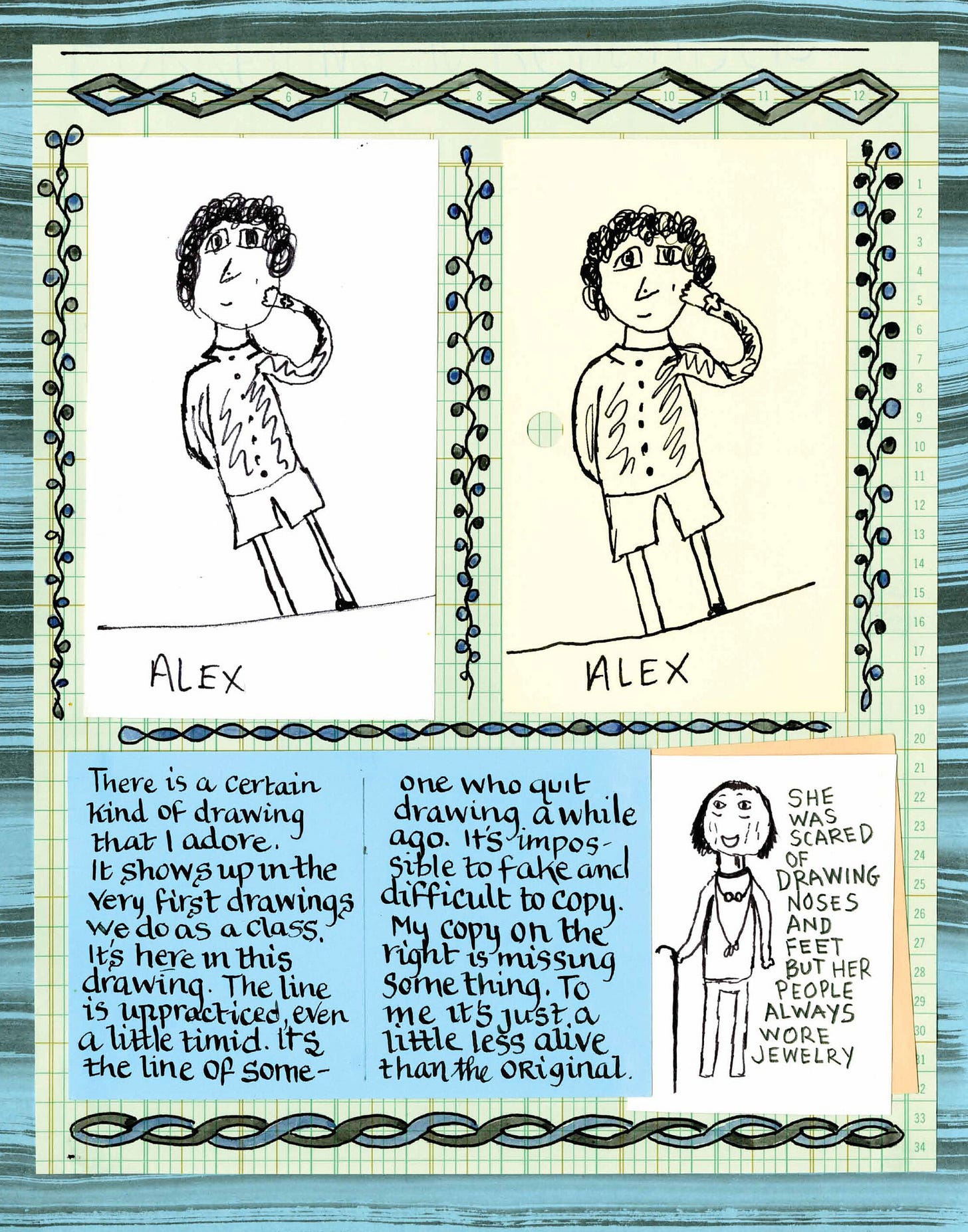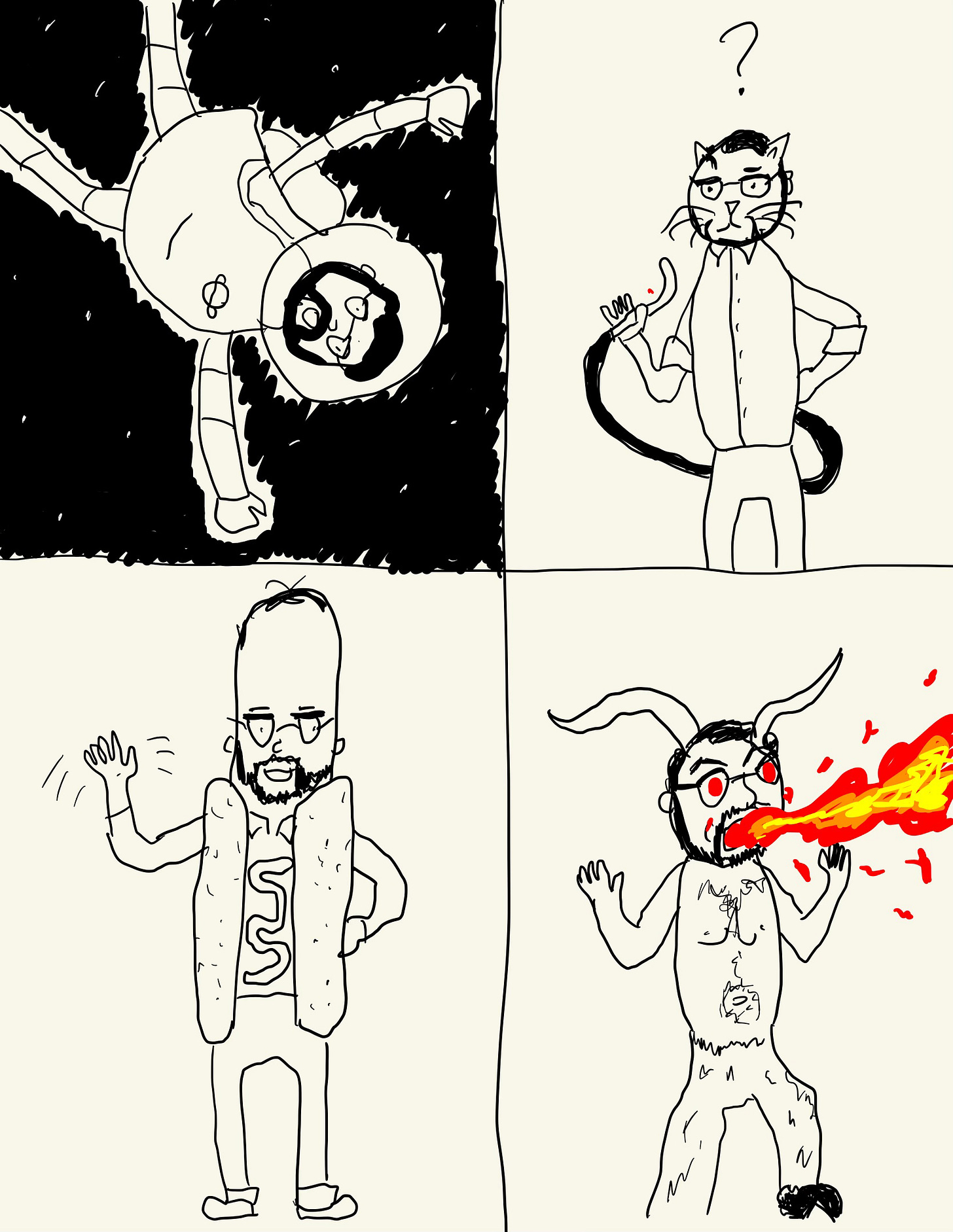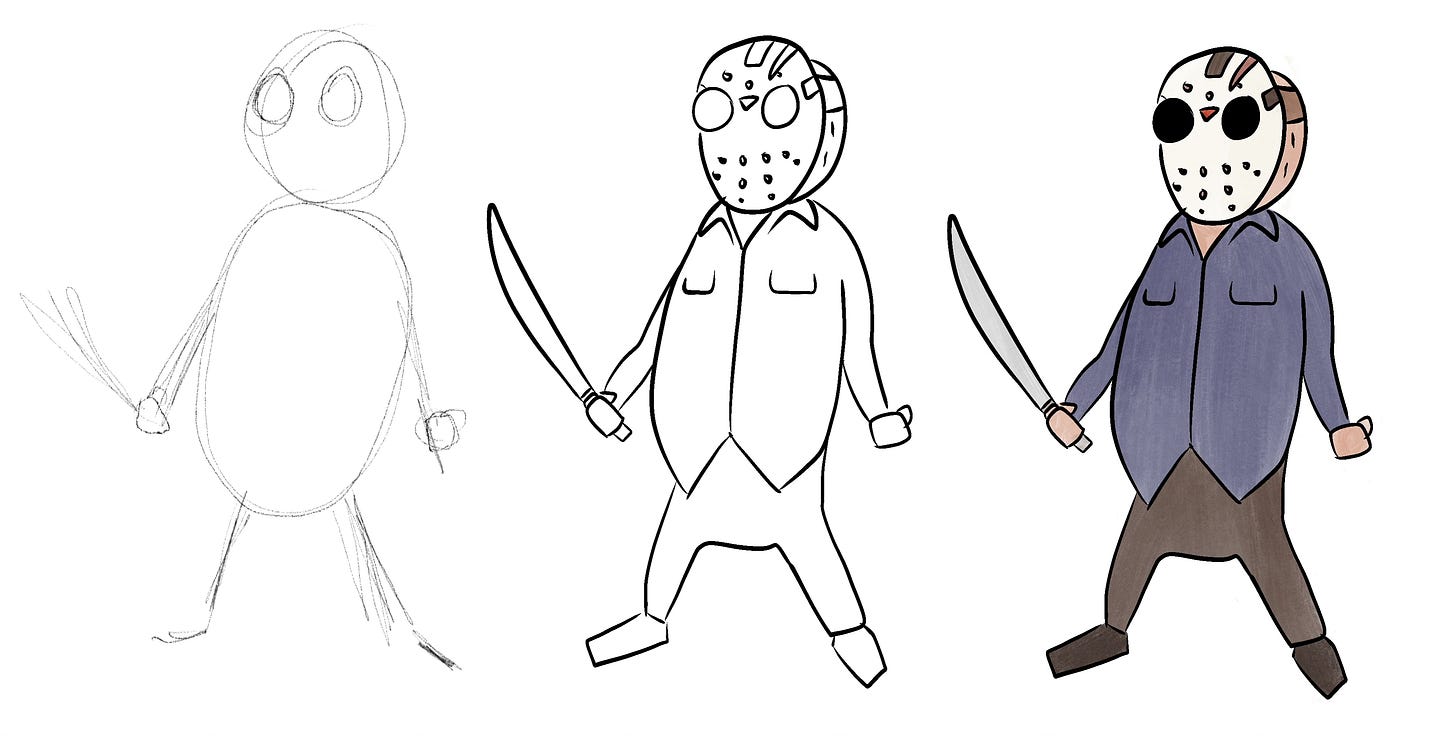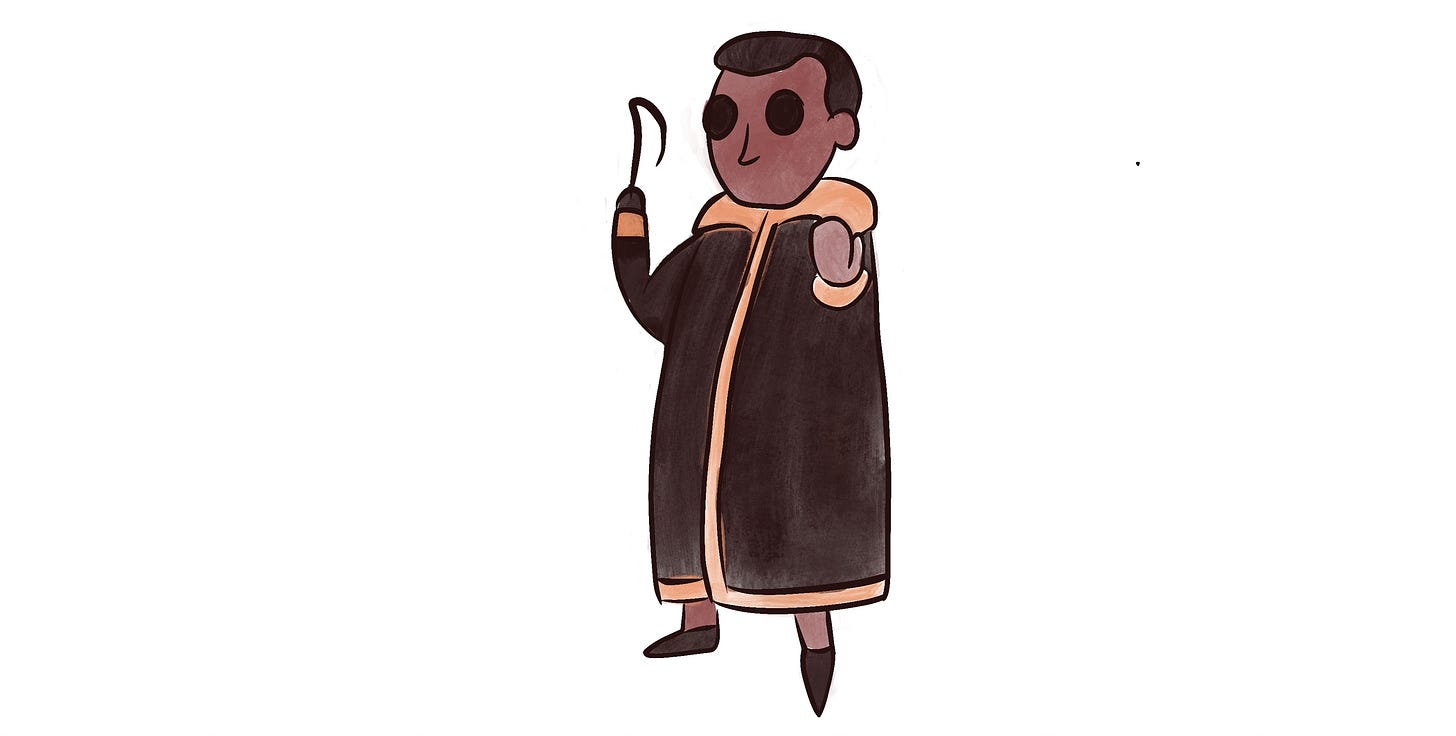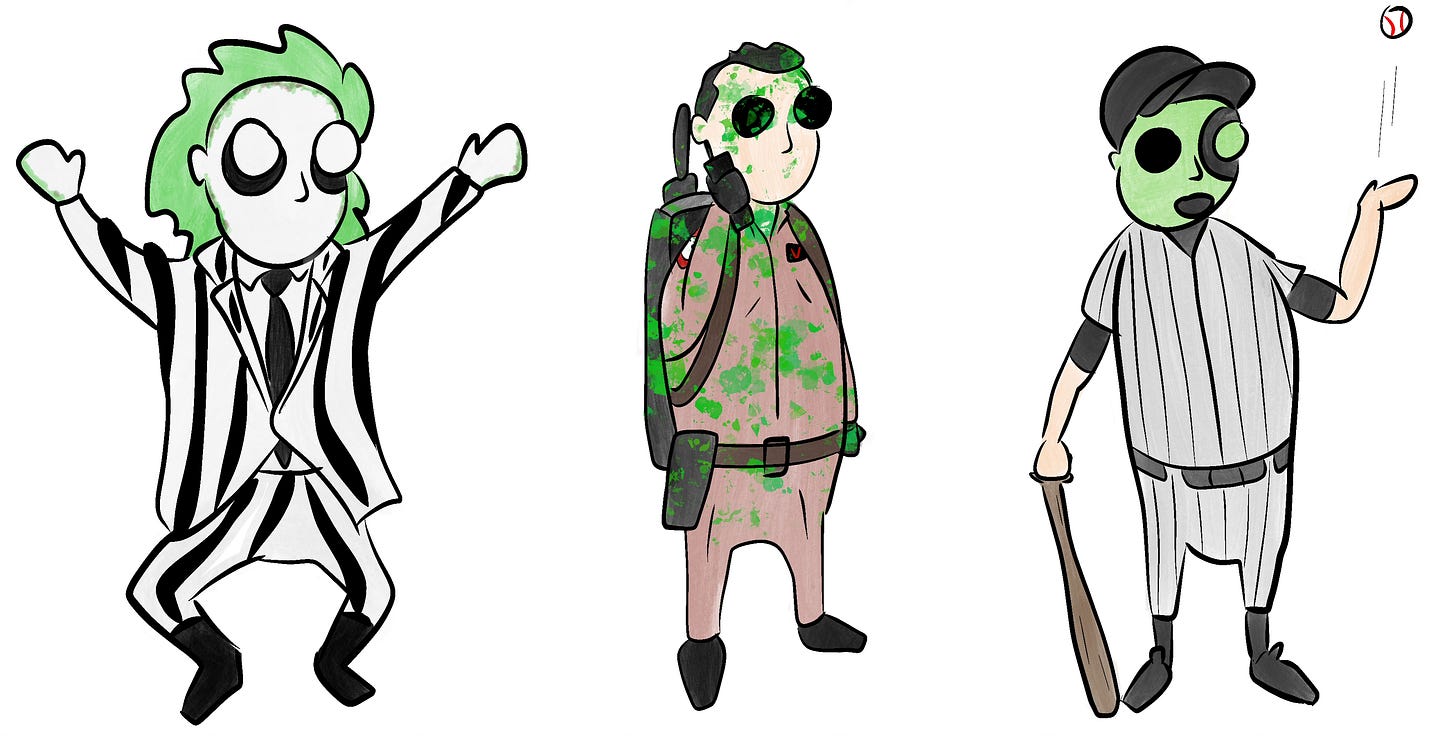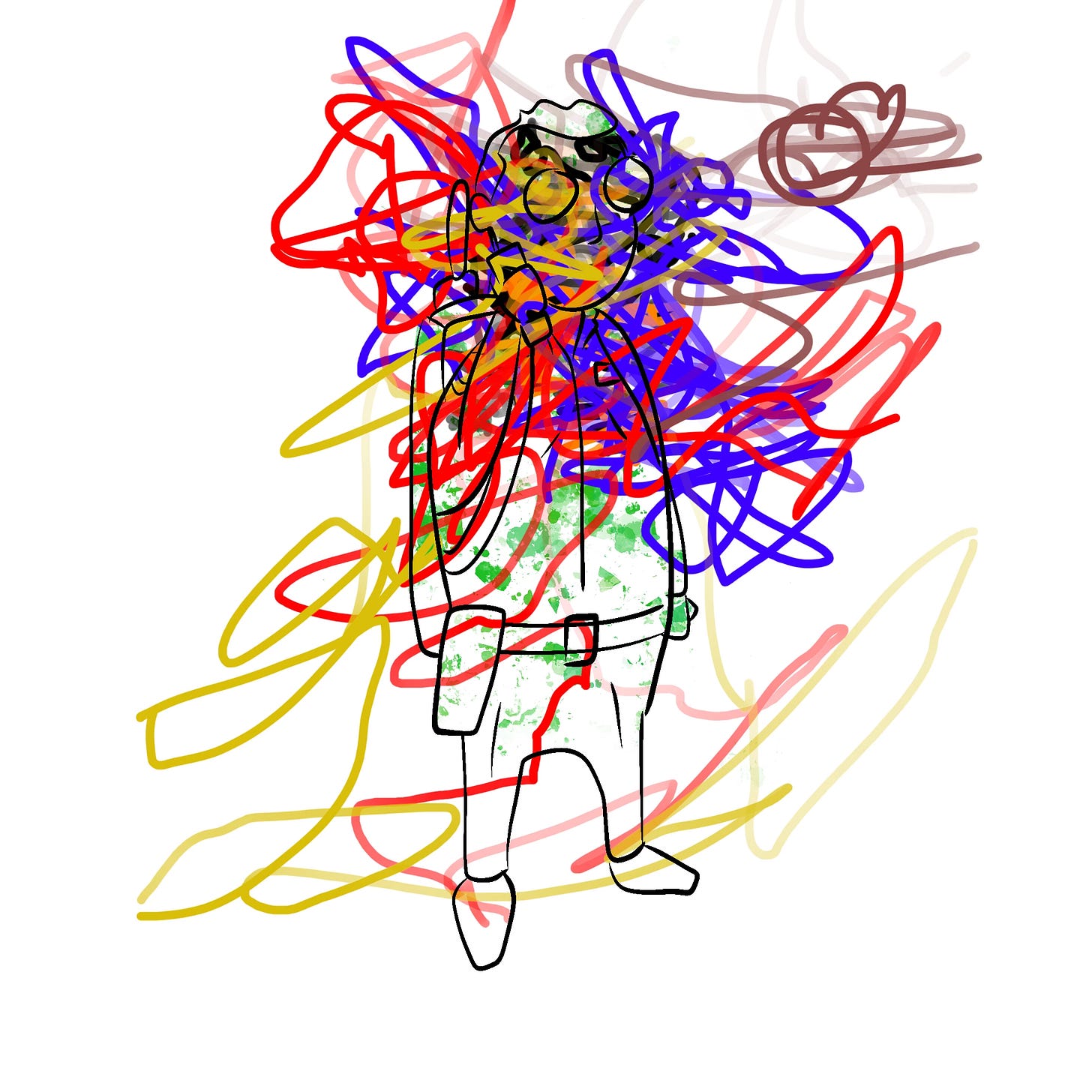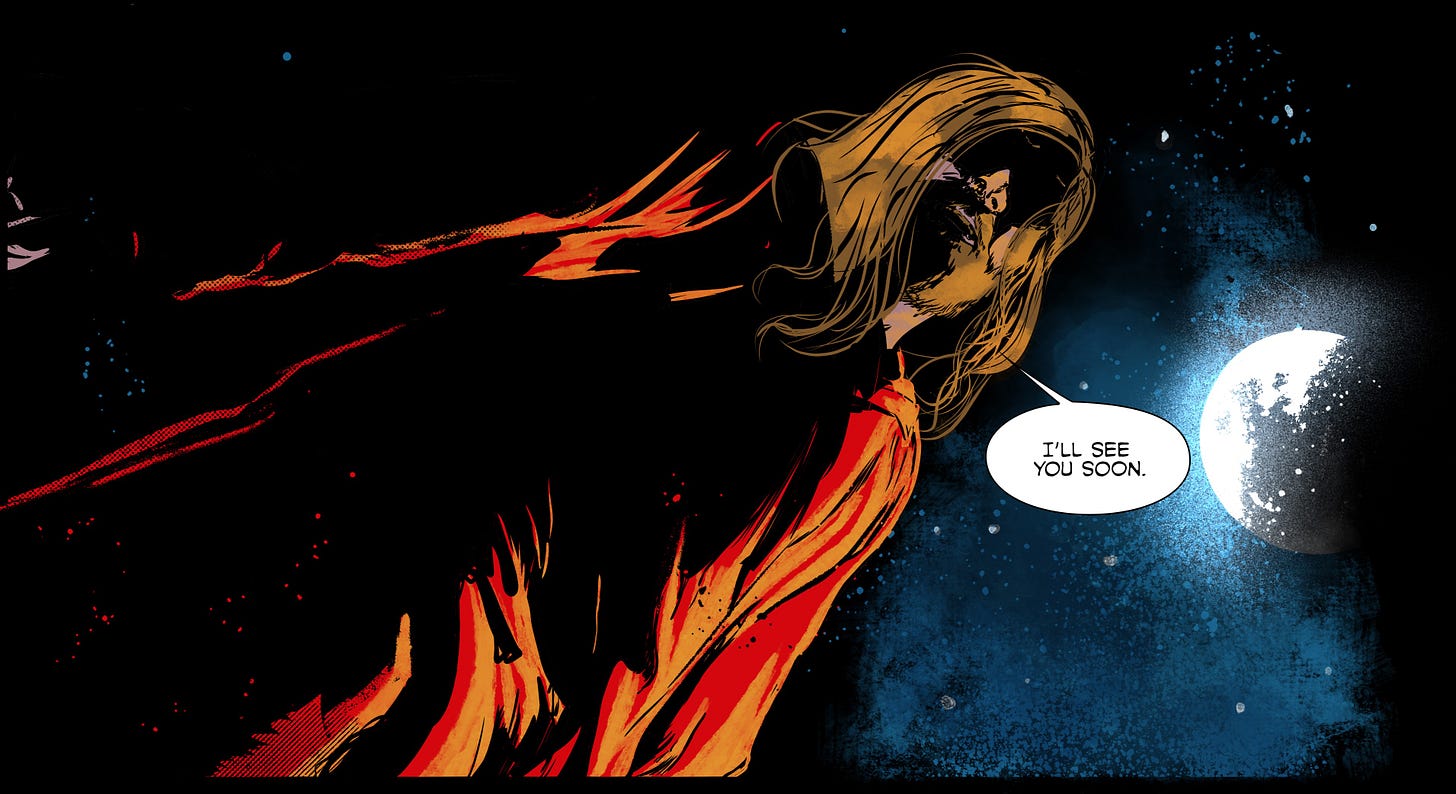What I Learned by Posting a Ton of Terrible Cartoons to Instagram
I’ve been in a bit of a creative rut. It’s not that I don’t have ideas or the ambitions to work on them. My biggest obstacle is the absence of a most precious resource: time. There just never seems to be enough hours in the day to wrestle the ideas that leap from the ropes of my brain into some kind of submission.
I find myself having a few idle minutes here, a passing minute there, where maybe, maybe, I can squeeze a little something in. And while I do think you can make yourself crazy trying to maximize the efficiency of every moment, I can’t help but want to scratch this mental creative itch.
And lo, the universe provides. I recently had the good fortunate to discover artist Lynda Barry’s book Making Comics. On its face, it’s a book about learning how to draw cartoons but in practice it’s one of the best books about creativity I’ve ever read.
Early in the book, Barry makes a strong case for appreciating amateurism in art, especially children’s art. She argues these works have a life and energy of their own that can’t be faked and encourages the reader to harness and appreciate this energy as they start making their own drawings. But furthermore, as children we have a propensity to draw or create before we’re ever taught. Drawing is a kind of intuitive, present, storytelling and that if we’re willing to lean into that same sense of child-like wonder about our own work, we can tap into that same magic we did as kids.
Most of what follows in the book is a series of exercises designed to evoke this kind of presence and spontaneity and offer some idea of what it’s like to take her cartooning class. For instance, one of the early prompts in the book is to divide a piece of paper into quadrants and make four drawings of yourself in twelve minutes; one in space, one turning into an animal, one as a food, and one as a monster. My results?
Are they good? I dunno. But they’re silly and they’re fun and alive! And in this way, Barry’s practice results in feeling like you have the permission and power to create.
So, with the desire to make something combined with the creative curiosity that Barry’s book invoked, I endeavored this last October to take on a little assignment for myself.
The Project
Draw thirty-one cartoon figures, each representing a character from my top thirty-one-horror films. The idea would be to post one a day on my Instagram starting on October 1 and work my way towards Halloween.
Create these figures in a simple, consistent, and repeatable art style. I wanted to have consistent aesthetic for the project but also a simple base template to work from to make jump starting each drawing easier. I drew a little inspiration from the Funko Pop collectibles in that I opted for round figures with big circular eyes and largely featureless facial expressions.
As often as possible, put these cartoons in dynamic poses to both add some dynamism to each portrait and make them instantly recognizable to someone familiar with the characters.
The Process
The easiest way for me to create digital, easily shareable versions of these images was to draw them on my iPad using Adobe Procreate. Before I started, I tested a number of brushes to get a feel for what “mediums” I liked best for the look of the project and ultimately settled on the following process:
A quick pencil sketch outlining and posing the figure. This step proved to be a lot easier than I thought, only needing the roughest of skeletons to outline the pose and eyeline of the figure. I found I could dash these off pretty quick.
Inked details of the character. This is where the drawings would really come to life, adding strong, solid lines on top of the skeleton and filling in each character’s signature details. This too turned out to be a fairly quick part of the process, with the Procreate “Baskerville” ink pen making creating smooth lines easy and visually pleasing.
Coloring each figure with “wet acrylic” paint. While each of these drawings was done digitally, I still wanted to give them as much of a hand-crafted quality as possible and going with a faux paintbrush helped by adding texture and imperfections. Keeping Barry’s advice in mind, I aimed to not make the coloring “too perfect” but the obsessive in me couldn’t help but need to keep the color inside the lines. The process of erasing the over spill contributed to making this easily the most time-consuming part of the exercise.
Challenges Along The Way
Once I got going, I immediately ran into some challenges with the parameters I set for myself. The first was an immediate rejection of the “top 31” format. Had I stuck with the original plan, I would have started the project with Suspira (2018), having to find a way to either draw a cartoon Dakota Johnson wearing little more than red string or Tilda Swinton as an idle, decaying witch. I stared at the page blankly for several minutes before deciding the flowing robes of Tony Todd’s Candyman would be a much easier way of kickstarting the project.
As I looked down the list to plan for the coming days, it immediately became clear that no matter whether a film was known and widely celebrated (like 28 Days Later) or a more obscure indie favorite (Kill List), not all of my favorite horror films lent themselves to drawing an easily recognizable character. The “top thirty-one horror movies” pivoted to a more open-ended “Halloween favorites” and proved to be a liberating choice. This opened the project up to more horror-adjacent films I love like Ghostbusters or Beetlejuice and, feeling inspired by the Los Angeles Dodgers’ postseason success, made including something like the Baseball Furies from The Warriors well within the scope of the project.
While keeping the facial features minimal was useful in being able to create each drawing quickly, I found it often made it difficult to “sell” each character. I worked around this by relying on body language, props, or even changing the eye color, but I can’t help but think that every one of these drawings would be improved with greater facial expression. (I’m tempted to go back and edit some of the better ones….)
So, what did I actually learn by doing all this?
As a writer, I often find it difficult to share work before it’s “ready.” It feels onerous to ask someone to give their time to read and share their thoughts on your creative writing. I have an impulse to try and work through as much as I can by myself before sharing with others. But this is often crippling as it can feel like I’ve spent a lot of time and energy without a lot to show for it.
This project offered a lot of fulfillment by escaping those tendencies. I really leaned into Barry’s belief that childlike works have a life of their own and feeling unburdened by something needing to be “good” allowed me to create without getting too in-my-head about it. The process was more important than the work itself in a lot of ways. Labeling all of these “Terrible Drawings” in my Insta posts might have been needlessly self-deprecating, but it also provided a certain freedom from critique by declaring they aren’t necessarily supposed to be “good.” Without fear of putting shitty art into the world, I could find joy just in sharing some silly doodles with my friends.
I think there’s something empowering working with that kind of permission to create. It allowed me to really just experiment and have fun with each individual drawing. By the time I got around to drawing Peter Venkmann in Ghostbusters, deciding to use a splatter brush to cover him in slime was a completely joyful creative decision.
Not only did I get the satisfaction of making something that I had been looking for, despite them being pretty simplistic I do think they actually got better over time. And while repeated effort resulting in better output over time isn’t exactly a new lesson for me, it was a nice reminder that a focus on process over results actually produces better results. I think that’s an important lesson to continue to apply to my written work.
The most rewarding part of the project though? My two-year-old son taking a break from playing with his cars and plopping himself into my lap to see what I was drawing on my iPad. He immediately felt that compulsion to create and make his own contributions to the project.
Sharing this sense of present, unbridled creation together with my son easily offered the most joy of all.
What’s next?
I recently discovered the amazing indie bookstore Pop Hop in Los Angeles’s Highland Park neighborhood where they carry a huge swath of self-published zines. And seeing all those very personal, hand-crafted, easily produced works at the same time I was endeavoring on this project has left me feeling like maybe there’s room for the same kind of expression in my own life. We’ll see!
With all the said, next month I’m going to share some works-in-progress of some comic projects that I’m hoping could be in your hands next year. They might not be done, but I want to show you what I’ve got.

